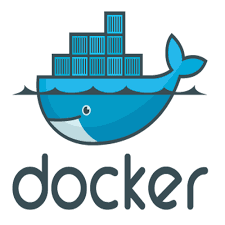Best Automated Code Review Tools Shortlist
Here’s my shortlist of the best automated code review tools:
- 3. CodeRabbit
Our one-on-one guidance will help you find the perfect fit.
Automated code review tools help you catch bugs early, enforce coding standards, and streamline pull requests without slowing your team down. If you're struggling with inconsistent reviews, bottlenecks in your CI/CD pipeline, or spending too much time catching easily preventable issues, the right tool can make a meaningful difference.
I've evaluated a range of these tools across different environments and workflows, and I know what separates a quick fix from a reliable long-term solution. This guide reflects that hands-on experience and highlights the top tools that can improve code quality while giving your developers time back to focus on more strategic work.
Why Trust Our Software Reviews
We’ve been testing and reviewing SaaS development software since 2023. As tech experts ourselves, we know how critical and difficult it is to make the right decision when selecting software. We invest in deep research to help our audience make better software purchasing decisions.
We’ve tested more than 2,000 tools for different SaaS development use cases and written over 1,000 comprehensive software reviews. Learn how we stay transparent & check out our software review methodology.
Best Automated Code Review Tools Summary
This comparison chart summarizes pricing details for my top automated code review tool selections to help you find the best one for your budget and business needs.
| Tool | Best For | Trial Info | Price | ||
|---|---|---|---|---|---|
| 1 | Best for real-time code analysis | Free plan + demo available | From $8/seat/month (billed annually) | Website | |
| 2 | Best for AI-driven insights | Free plan available | From $15/user/month | Website | |
| 3 | 14-day free trial available | From $12/month (billed annually) | Website | ||
| 4 | Best for security checks | Free demo available | Pricing upon request | Website | |
| 5 | Best for detecting Java bugs | Not available | Free to use | Website | |
| 6 | Best for code review workflow | Not available | Free to use | Website | |
| 7 | Best for behavioral code analysis | Free trial + demo available | From €18/active author/month (billed annually) | Website | |
| 8 | Best for maintainability metrics | Free consultation available | Pricing upon request | Website | |
| 9 | Best for pull request analysis | Free trial + demo available | From $30/month | Website | |
| 10 | Best for team collaboration | Free plan available | From $20/user/month | Website |
-

Docker
Visit WebsiteThis is an aggregated rating for this tool including ratings from Crozdesk users and ratings from other sites.4.6 -

Pulumi
Visit WebsiteThis is an aggregated rating for this tool including ratings from Crozdesk users and ratings from other sites.4.8 -

GitHub Actions
Visit Website
Best Automated Code Review Tool Reviews
Below are my detailed summaries of the best automated code review tools that made it onto my shortlist. My reviews offer a detailed look at the key features, pros & cons, integrations, and ideal use cases of each tool to help you find the best one for you.
DeepSource helps developers catch issues in code early and fix them automatically. It’s built for engineering teams that want to improve code quality across multiple repositories without adding friction to their workflows.
Why I picked DeepSource: DeepSource checks every commit instantly and shows issues as you push code. It helps your team enforce standards using pre-configured or custom rules. You can auto-fix common problems right from the dashboard. It also shows trends in issues over time, so your team can catch recurring patterns before they grow. This keeps your codebase clean without slowing anyone down.
Standout features & integrations:
Features include autofix suggestions with a single click, custom static analysis rules you can define yourself, and code health reports to track progress. You’ll also get support for monorepos and multi-language projects in one dashboard. Teams can use baseline suppression to reduce noise from legacy issues.
Integrations include GitHub, GitLab, Bitbucket, Slack, Jira, Azure DevOps, ClickUp, Sentry, and Linear.
Pros and cons
Pros:
- Autofix support for multiple languages
- Shows trends in issue history
- Works well with monorepos
Cons:
- Baseline config takes time
- Lacks built-in onboarding help
Bito AI Code Review Agent is an AI-powered tool designed primarily for developers and teams looking to enhance their code review process. It provides on-demand code reviews and focuses on improving productivity and code quality without storing user code.
Why I picked Bito AI Code Review Agent: Bito AI Code Review Agent delivers AI-driven insights directly within IDEs, helping your team save time and reduce review conflicts. Its features include enterprise-grade security and support for junior engineers, making it a versatile option for teams of various sizes.
Bito's ability to integrate seamlessly with popular development environments like VS Code and JetBrains enhances its utility. The focus on security, by not storing user code, ensures that your team's data remains private.
Standout features & integrations:
Features include on-demand feedback within IDEs, support for junior engineers, and enhanced security that doesn't store user code. These features help your team improve productivity and maintain code quality.
Integrations include VS Code, JetBrains IDEs, GitHub, GitLab, Bitbucket, Slack, Jira, and Asana.
Pros and cons
Pros:
- Enhances code review productivity
- Supports junior engineers
- Focuses on security and privacy
Cons:
- Limited to supported IDEs
- Primarily for development environments
CodeRabbit is an AI-powered code review tool aimed at developers and teams seeking to improve code quality and streamline the review process. It automates code reviews, providing instant feedback and AI-generated summaries to facilitate efficient coding practices.
Why I picked CodeRabbit: CodeRabbit excels at offering automated suggestions by integrating AI to provide instant feedback and facilitate collaborative discussions within pull requests. Its ability to automate static analysis and security checks ensures high code quality.
The tool's AI-generated summaries and user-friendly interface enhance team productivity. With CodeRabbit, your team can save time and focus on improving code quality.
Standout features & integrations:
Features include automated static analysis, AI-generated summaries, and facilitation of pull request discussions. These features enhance code quality and provide your team with valuable insights during the review process.
Integrations include GitHub, GitLab, Azure DevOps, Bitbucket, Slack, Jira, Trello, Asana, Jenkins, and CircleCI.
Pros and cons
Pros:
- Provides instant feedback
- Enhances code quality
- Facilitates pull request discussions
Cons:
- May require initial setup
- Complexity for small teams
Coverity is an application security software for developers and security teams across various industries. It focuses on static analysis (SAST) and software composition analysis (SCA) to identify vulnerabilities and manage software supply chain security.
Why I picked Coverity: Coverity excels in security checks, offering comprehensive static analysis tools that detect vulnerabilities in code. Its software composition analysis feature helps manage security risks within the software supply chain. The tool integrates with development workflows to ensure security is part of the development process.
Coverity's strong focus on application security testing and compliance makes it a reliable choice for security-conscious teams.
Standout features & integrations:
Features include advanced static analysis for vulnerability detection, software composition analysis for managing supply chain risks, and built-in compliance management tools. These features help your team maintain secure and compliant software development practices.
Integrations include Jenkins, GitHub, GitLab, Bitbucket, Azure DevOps, JIRA, Confluence, Slack, Eclipse, and IntelliJ IDEA.
Pros and cons
Pros:
- Manages software supply chain security
- Integrates with development workflows
- Built-in compliance management
Cons:
- Requires technical expertise
- Primarily for security-focused teams
FindBugs/SpotBugs is a static analysis tool aimed at developers working with Java code. It helps identify and fix bugs in Java programs, making it essential for teams focused on code quality and reliability.
Why I picked FindBugs/SpotBugs: FindBugs/SpotBugs specializes in detecting Java bugs, offering in-depth analysis to catch potential issues early. Its ability to analyze bytecode helps your team identify problems that aren't obvious in the source code.
The tool's focus on Java makes it a great fit for teams working primarily in this language. Additionally, its open-source nature provides flexibility and adaptability for different project needs.
Standout features & integrations:
Features include the ability to analyze bytecode for deeper insights, open-source flexibility for customization, and detailed bug descriptions to aid in understanding issues. These features support your team's efforts to maintain high-quality Java code.
Integrations include Eclipse, IntelliJ IDEA, NetBeans, Jenkins, Gradle, Maven, Ant, JIRA, SonarQube, and Travis CI.
Pros and cons
Pros:
- Analyzes bytecode for insights
- Open-source and customizable
- Provides detailed bug descriptions
Cons:
- Limited to the Java language
- Requires setup and configuration
Gerrit is a code review tool that integrates directly with Git, making it suitable for developers looking to manage and review code within Git repositories. It supports syntax highlighting and customizable workflows, which are essential for teams focused on maintaining code quality and consistency.
Why I picked Gerrit: Gerrit excels in providing a structured code review workflow with integrated Git support. Its syntax highlighting feature enhances readability during reviews, which is crucial for detecting code issues.
Gerrit's customizable workflows allow your team to tailor the review process to fit specific needs. Additionally, the tool's access control features ensure that only authorized team members can approve changes, enhancing security.
Standout features & integrations:
Features include syntax highlighting for better code readability, customizable workflows to fit your team's processes, and access control for secure code management. These features help maintain a structured and efficient review process.
Integrations include Git, Jenkins, GitHub, GitLab, Bitbucket, Atlassian Jira, Slack, Trello, Discord, and Asana.
Pros and cons
Pros:
- Syntax highlighting for readability
- Secure access control
- Active community support
Cons:
- May require technical setup
- Limited to Git repositories
CodeScene is a behavioral code analysis tool for software development teams aiming to improve code quality and team efficiency. It focuses on identifying code health issues and visualizing hotspots to help teams prioritize technical debt and enhance collaboration.
Why I picked CodeScene: CodeScene excels in behavioral code analysis by providing unique insights into code health and team dynamics. It visualizes hotspots in your codebase, helping your team identify areas that need attention.
The tool's ability to analyze code history and predict maintenance risks sets it apart. CodeScene's focus on improving team efficiency and code quality aligns well with its behavioral analysis capabilities.
Standout features & integrations:
Features include hotspot visualization to highlight critical areas, code health analysis for maintaining quality, and risk prediction to anticipate maintenance challenges. These features help your team focus on the most impactful improvements.
Integrations include GitHub, GitLab, Bitbucket, Azure DevOps, Jira, Jenkins, Slack, Trello, Asana, and CircleCI.
Pros and cons
Pros:
- Predicts maintenance risks
- Focuses on code health
- Improves collaboration
Cons:
- Requires historical data
- Limited to development teams
Code Climate is a software engineering intelligence platform for enterprises seeking to enhance engineering insights. It primarily serves engineering executives and management, focusing on aligning engineering efforts with business outcomes. The tool provides data-driven insights to aid in decision-making and improve code maintainability.
Why I picked CodeClimate: Code Climate specializes in maintainability metrics, offering unique features like the Code Climate Diagnostic. This feature analyzes engineering data to provide actionable insights.
The platform's focus on aligning engineering efforts with business goals differentiates it from other tools. It also provides advisory services such as the Executive Insights Program to further support your team.
Standout features & integrations:
Features include actionable insights from engineering data, advisory services for engineering executives, and tailored strategies to meet business goals. These features help your team make informed decisions and align efforts with desired outcomes.
Integrations include GitHub, GitLab, Bitbucket, Slack, Jira, Trello, Asana, Jenkins, CircleCI, and Travis CI.
Pros and cons
Pros:
- Focuses on maintainability metrics
- Aligns with business outcomes
- Supports data-driven decision-making
Cons:
- Limited to enterprise-level solutions
- Primarily targets management roles
CodiumAI PR-Agent, now rebranded as Qodo, is an AI-driven coding platform for developers and teams focused on enhancing code quality through automated code reviews and test generation. It caters to a wide range of developers looking to improve efficiency and maintain high standards in their coding practices.
Why I picked CodiumAI PR-Agent: CodiumAI excels in pull request analysis by providing features such as Qodo Merge for automated code reviews. It offers context-aware code suggestions and iterative test generation, which help your team catch issues earlier.
The platform's integration with popular development environments supports seamless workflows. Its focus on improving code quality and efficiency aligns perfectly with the needs of development teams.
Standout features & integrations:
Features include context-aware code suggestions, iterative test generation, and a flexible API for custom workflows. These features help your team improve code quality and efficiency effectively.
Integrations include GitHub, GitLab, Visual Studio, Bitbucket, Slack, Jira, Trello, Asana, Jenkins, and Azure DevOps.
Pros and cons
Pros:
- Provides context-aware suggestions
- Enhances code quality and efficiency
- Flexible API for custom workflows
Cons:
- Complexity for small teams
- Primarily for development use
Codebeat is an automated code review tool for developers and teams working on mobile and web applications. It helps you prioritize issues and identify quick wins in your code, making it ideal for both small and large teams looking to enhance code quality.
Why I picked Codebeat: Codebeat excels in team collaboration by providing tools that manage team access and project assignments efficiently. Its ability to track quality changes in repositories ensures that your team can merge code with confidence.
Codebeat's support for multiple programming languages makes it versatile for diverse development environments. The tool's focus on collaboration and ease of use sets it apart, especially for teams needing to manage projects seamlessly.
Standout features & integrations:
Features include managing team access levels, tracking quality changes in real-time, and supporting multiple programming languages. These features help your team maintain high code quality and facilitate efficient project management.
Integrations include GitHub, Bitbucket, GitLab, Slack, Trello, Jira, Asana, Jenkins, CircleCI, Travis CI, and Azure DevOps.
Pros and cons
Pros:
- Supports multiple programming languages
- Real-time quality tracking
- Enhances code collaboration
Cons:
- Limited customization options
- May require setup time
Other Automated Code Review Tools
Here are some additional automated code review tools options that didn’t make it onto my shortlist, but are still worth checking out:
- PullRequest
For on-demand reviews
- Reviewable
For customizable reviews
- Codacy
For automated quality checks
- Snyk Code
For security insights
- Codiga
For real-time feedback
- CodeQL (GitHub)
For custom queries
- Checkmarx
For vulnerability detection
- CodeSonar (GrammaTech)
For deep static analysis
- SonarQube
For continuous inspection
- Amazon CodeGuru Reviewer
For AWS integration
Automated Code Review Tool Selection Criteria
When selecting the best automated code review tools to include in this list, I considered common buyer needs and pain points like improving code quality and reducing manual review time. I also used the following framework to keep my evaluation structured and fair:
Core Functionality (25% of total score)
To be considered for inclusion in this list, each solution had to fulfill these common use cases:
- Detecting code issues
- Providing code quality metrics
- Supporting multiple programming languages
- Offering integration with version control systems
- Facilitating collaboration among team members
Additional Standout Features (25% of total score)
To help further narrow down the competition, I also looked for unique features, such as:
- Real-time feedback
- AI-driven code suggestions
- Customizable review workflows
- Security vulnerability detection
- Behavioral code analysis
Usability (10% of total score)
To get a sense of the usability of each system, I considered the following:
- Intuitive user interface
- Ease of navigation
- Minimal learning curve
- Customizable dashboards
- Responsive design
Onboarding (10% of total score)
To evaluate the onboarding experience for each platform, I considered the following:
- Availability of training videos
- Interactive product tours
- Access to templates
- Webinars for new users
- Chatbot support during setup
Customer Support (10% of total score)
To assess each software provider’s customer support services, I considered the following:
- Availability of 24/7 support
- Access to a knowledge base
- Responsiveness of the support team
- Availability of live chat
- Quality of support documentation
Value For Money (10% of total score)
To evaluate the value for money of each platform, I considered the following:
- Competitive pricing
- Flexible subscription plans
- Inclusion of essential features
- Cost of additional features
- Satisfaction with pricing relative to features
Customer Reviews (10% of total score)
To get a sense of overall customer satisfaction, I considered the following when reading customer reviews:
- Feedback on tool reliability
- Opinions on feature effectiveness
- Satisfaction with customer service
- Overall ease of use
- Willingness to recommend the tool
How to Choose Automated Code Review Tools
It’s easy to get bogged down in long feature lists and complex pricing structures. To help you stay focused as you work through your unique software selection process, here’s a checklist of factors to keep in mind:
| Factor | What to Consider |
| Scalability | Will the tool grow with your team? Consider if it can handle increased code volume and more users without performance drops. |
| Integrations | Does the tool fit into your current tech stack? Check compatibility with your version control systems and communication platforms. |
| Customizability | Can you adjust the tool to fit your workflows? Look for options to customize dashboards and review processes. |
| Ease of use | Is the tool intuitive for your team? Evaluate the learning curve and whether it requires extensive training. |
| Implementation and onboarding | How quickly can your team get started? Consider the availability of training resources and the ease of initial setup. |
| Cost | Does the tool fit your budget? Compare pricing plans and consider the cost of additional features. |
| Security safeguards | Are there strong data protection measures? Assess encryption, data storage practices, and compliance with security standards. |
| Support availability | What support options are available? Look for 24/7 support, live chat, and a comprehensive knowledge base to assist your team. |
What Are Automated Code Review Tools?
Automated code review tools are software solutions that automatically check code for errors, bugs, and quality issues. Developers, software engineers, and QA professionals generally use these tools to enhance code quality and efficiency.
Syntax checking, bug detection, and integration capabilities help with identifying issues early, improving collaboration, and maintaining high standards. Overall, these tools save time and reduce human error in the code review process.
Features of Automated Code Review Tools
When selecting automated code review tools, keep an eye out for the following key features:
- Syntax checking: Automatically identifies syntax errors in code, helping prevent bugs before they reach production.
- Bug detection: Finds potential issues and vulnerabilities in the code, improving overall quality and security.
- Integration capabilities: Connects with version control systems and other static code analysis tools for Java or other programming languages to fit seamlessly into your existing workflow.
- Customizable workflows: Allows you to tailor the review process to suit your team's specific needs and preferences.
- Real-time feedback: Provides instant insights and suggestions, allowing developers to address issues as they code.
- Security analysis: Scans for security vulnerabilities, ensuring that your code complies with security standards.
- Code quality metrics: Offers insights into code maintainability and complexity, helping teams improve long-term code health.
- Collaboration tools: Facilitate communication and coordination among team members during the review process.
- AI-driven insights: Utilizes artificial intelligence to provide advanced suggestions and automate repetitive tasks.
- Hotspot visualization: Highlights critical areas in the codebase that need attention, enabling focused improvement efforts.
Benefits of Automated Code Review Tools
Implementing automated code review tools provides several benefits for your team and your business. Here are a few you can look forward to:
- Improved code quality: Automated checks catch errors and bugs early, ensuring your codebase remains clean and reliable.
- Time savings: By automating repetitive review tasks, your team can focus on more important work, boosting productivity.
- Enhanced security: Regular scans for vulnerabilities help protect your code from security risks and maintain compliance.
- Better collaboration: Tools that facilitate communication make it easier for team members to work together during reviews.
- Consistent standards: With customizable workflows and metrics, your team can maintain uniform coding practices across projects.
- Faster onboarding: New team members can quickly get up to speed with automated feedback and training resources.
- Informed decision-making: Real-time insights and metrics provide valuable data to help guide development and business strategies.
Costs and Pricing of Automated Code Review Tools
Selecting automated code review tools requires an understanding of the various pricing models and plans available. Costs vary based on features, team size, add-ons, and more. The table below summarizes common plans, their average prices, and typical features included in automated code review tools solutions:
Plan Comparison Table for Automated Code Review Tools
| Plan Type | Average Price | Common Features |
| Free Plan | $0 | Basic syntax checking, limited integrations, and community support. |
| Personal Plan | $5-$25 /user /month | Syntax and bug detection, basic integrations, and limited customization options. |
| Business Plan | $25-$50 /user /month | Advanced bug detection, security analysis, team collaboration tools, and support. |
| Enterprise Plan | $50+/user /month | Full customization, advanced security features, dedicated support, and analytics. |
Automated Code Review Tools FAQs
Here are some answers to common questions about automated code review tools:
What is the difference between manual and automated code review?
Manual code review involves a developer checking the code line by line for defects and security flaws, while automated code review uses tools to scan the code and report potential issues. Automated reviews are faster and reduce the chance of human error, but manual reviews can offer deeper insights.
Why are automated code reviews used in preference to code reviews by another developer?
Automated code reviews provide faster feedback, increased consistency, and reduced human error. They allow your team to focus on complex issues while ensuring high-quality code, making them a preferred choice for efficiency and reliability.
What is the code review process in automation testing?
The code review process in automation testing involves using software tools to analyze source code for bugs, security vulnerabilities, and coding standard violations. These tools help human reviewers by flagging issues that might need attention, streamlining the review process.
How do you perform an automation code review walkthrough in your project?
To perform an automation code review walkthrough, ensure no hardcoded values, verify scripts meet acceptance criteria, and keep code simple. Use functions effectively and apply the DRY (Don’t Repeat Yourself) principle to maintain clean and efficient code.
What are the advantages of using automated code review tools?
Automated code review tools offer benefits like speeding up the review process, enhancing code quality through consistent checks, and freeing up developers to focus on more complex tasks. They also help enforce coding standards across your team.
How do automated code review tools integrate with existing workflows?
Automated code review tools typically integrate with version control systems like GitHub or GitLab, allowing them to fit seamlessly into your existing development workflow. This integration helps ensure that code is reviewed automatically as part of your team’s regular processes.
What's Next?
Boost your SaaS growth and leadership skills. Subscribe to our newsletter for the latest insights from CTOs and aspiring tech leaders. We'll help you scale smarter and lead stronger with guides, resources, and strategies from top experts!
























